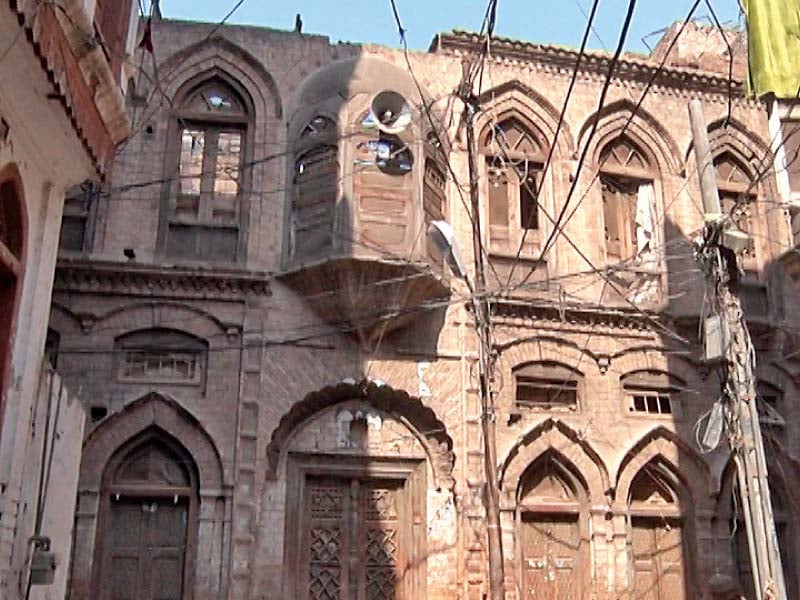
An ancient temple in Karimpura in the city has been half demolished by tenants on the pretext of repair work. Though the site—which was not functional for years—has been sealed by the government, locals think the real aim is to erect a commercial plaza on the land.
The historic temple located in Mohalla Wangri Garan had been given on lease by the government. It was being used for various business activities for some years.
The building is more than 75 years old, but instead of being preserved, it has been left to deteriorate. After the roof of the temple was demolished during ‘repair work’, the district administration sealed the building in February.
Space through time
A resident of Mohallah Wangri Garan requesting anonymity told The Express Tribune, “Our forefathers told us it was a Hindu temple and in 1948, the building was given on lease to a person named Qadir Khan.”
He said 15 years ago, the building was used as a warehouse and almost three months ago, a person came here and told us he had taken permission from the government to repair it. “Within 10 days he demolished the roof of the building.”
He added when locals resisted, deputy commissioner Riaz Mehsud and Khyber-Pakhtunkhwa Directorate of Archaeology and Museums Director Dr Abdul Samad visited the site and sealed it.

Inside of Mughal-era site in Palosi Piran
Mughal-era site in Palosi Piran
Kotla Mohsin Khan
Need for conservation
The resident said tourists from India and many other countries used to visit the temple and take pictures but recent demolishment and subsequent construction of a commercial plaza will drive visitors away.
“The building was given on lease and then the government ceased to take care of the temple,” he complained.
“It is the responsibility of Evacuee Trust Property Board (ETPB), Auqaf department dealing with non-Muslim properties, and archaeology department to protect historical and religious sites.”
The resident said under the Antiquities Act 1997, the building is not the property of a single person but “is our national heritage”.
Another resident of the area said he used to visit the temple during his childhood and there were four minarets inside – characteristic of Hindu temples. He added one could still see a minaret on the right side of the temple which was constructed in the dharamshala – a hostel near the temple where pilgrims from far-flung areas would reside.
However, now a private school has been constructed on the land of dharamshala and the minaret can be seen situated on the boundary walls of the school.
He also pointed out there was another holy place for Hindu worshippers near the temple where Hindus used to sing their devotional songs, bhajans, but lack of preservation has meant the activity has ceased.

Minaret of Daramsala near temple
Debating authenticityw
The second resident said 20 years ago, a Hindu from India visited the temple and told locals his forefather had worshiped in the same temple before Partition.
However, K-P Directorate of Archaeology and Museums Deputy Director Moahid Gul believed the ancient building was not a temple. “When I visited the site, the shape of the building revealed it was not a temple,” he said.
When contacted, the tenant of the ancient building refused to talk about the matter and simply stated he possessed documents for the building.
Gul said according to the Antiquities Act 1997, the building was more than 75 years old and though it was a heritage site, it was given to tenants on lease.
Published in The Express Tribune, May 1st, 2016.




































COMMENTS
Comments are moderated and generally will be posted if they are on-topic and not abusive.
For more information, please see our Comments FAQ